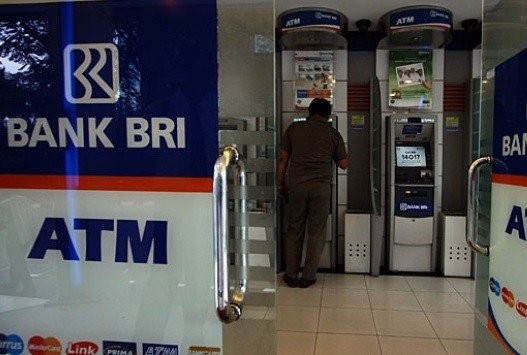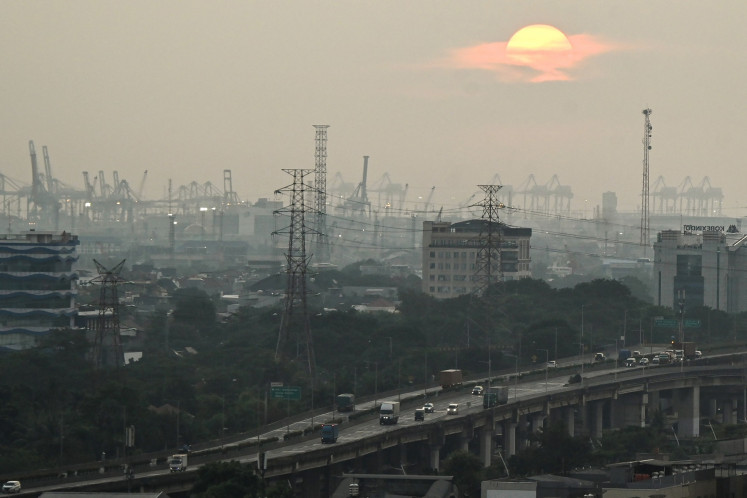RI banks see COF hike amid high interest rate
While the country's top four lenders posted a rise in COF and a slight dip in NIM during the first quarter, a banking analyst has projected steady net growth over the year.
Change text size
Gift Premium Articles
to Anyone

M
ajor Indonesian banks saw their cost of funds (COF) rise during the first quarter of this year as they strived to maintain public money on balance sheets in a high interest rate environment.
COF measures the rate banks have to pay in order to secure sufficient funds needed to sustain operations, which primarily involve lending to customers.
State-owned lender Bank Mandiri said in its quarter one earnings report that its COF had increased by 0.32 percentage points compared to the previous quarter, following a move to offer time deposits at a special rate to maintain liquidity.
Bank Rakyat Indonesia (BRI), another state-owned lender, also took a similar measure that resulted in its first-quarter COF growing by 0.62 percentage points compared to the previous quarter.
BRI cited the rising interest rate trend, preparations for the Idul Fitri holiday season and dividend payment period among the factors that led to a higher COF in March and April. However, it said the COF would stabilize over the remainder of this year.
Meanwhile, the country’s largest private lender BCA followed by raising interest rates for its time deposits in March. This marked a departure from its previous stance last year, during which it saw no need to adjust its savings and time deposit rates.
“However, time deposits only cover around 19 percent of our total third-party funds. Thus, this [rate] increase for time deposits resulted in only a hike of 0.1 percentage point to our cost of funds,” BCA CEO Jahja Setiaatmadja said during its earnings call on Thursday.
Doddy Ariefianto, a banking industry analyst at Binus University, saw that the rate adjustments affecting the COF of many national banks were necessary to maintain their competitiveness.
“If the gap is too wide from [the rates at] other banks, they could be abandoned by customers,” Doddy told The Jakarta Post on Friday.
He added that while BCA usually disregarded rate trends, “as if they don’t need any money, was pushed to compete” this time.
NIM ‘to be stable’
The country’s four major banks, BRI, BCA, Bank Mandiri and state-owned lender BNI, had all marked a consistent increase in their net interest margin (NIM) compared to last year.
NIM measures the difference between a bank’s interest income from lending and its interest expense to maintain public funds.
However, the banks saw a slight dip in NIM when compared to the fourth quarter of 2022, pointing to the rise in COF as one of the contributing factors.
M. Amin Nurdin, a senior faculty member at the Indonesian Banking Development Institute (LPPI) told the Post on Friday that even so, the four banks’ NIM could still be deemed hefty and that the slight drop was seen as manageable because their cash buffer was larger.
He added that he expected the lenders’ NIM to be stable this year, as they had several strategies to maintain it.
Amin also emphasized a need to consider “the effect of the efficiency processes banks have undertaken, such as digitalization to shorten the banking process”.
In its earnings report, Bank Mandiri stated that its COF had offset its improved loan yield during the first quarter, but it forecast that its NIM would still fall within this year’s guidance of between 5.3 percent and 5.6 percent.
Read also: Provisions for impairment losses becomes a banking buffer
BRI CEO Sunarso said in February that a bank’s bottom-line performance was not determined by the NIM, and that credit volume and the number of customers served also affected net profit.
“For BRI, the main driver of our net profit is more the micro businesses” that became customers, he said at the time, as quoted by financial newspaper Kontan.
Despite the quarterly drop in NIM, the three major lenders BRI, Bank Mandiri and BNI still posted net profit growth of respectively 29 percent, 19.4 percent and 13 percent.
BCA’s net profit was down 2.1 percent compared to the previous quarter, but still booked 43 percent yoy growth compared to the same period last year.
During its earnings call, Jahja said the bank’s performance generally saw negative first-quarter growth due to seasonal factors, but that it would bounce back in the second quarter.
Amin from the LPPI projected that the major banks could continue to post net profit growth until the end of the year, as the country would see only a minor impact from the banking crises in the United States and Europe.
He noted that some international banks with Indonesian branches might experience “a hiccup” as they dealt with challenges in their country of origin.
“I believe the fundamentals of Indonesian banks are stable and will be maintained, especially at those four major banks. During the pandemic, they also had prepared better banking processes, digitalization and provisions,” Amin added.
Careful rate hikes
Amin said lenders might consider raising their rates to keep up with a higher COF but he expected the hikes to be gradual. He explained that the banks would be careful in increasing their lending rates, as doing so could slow loan growth.
“The [economic] condition has not fully recovered. I think some banks will [raise rates], albeit slowly, while others might prefer to keep it at the current level,” he said.
Read also: Major Indonesian banks hit loan brake after last year’s frenzy
Jahja was of the same view, saying BCA was currently not in a position to increase its lending rates, considering the impact such a move would have on loan repayments.
“With the [current] loan interest rates, with the existing customer base, we want to grow credit prudently, so we can also keep the nonperforming loan ratio” at a healthy level, he said.









